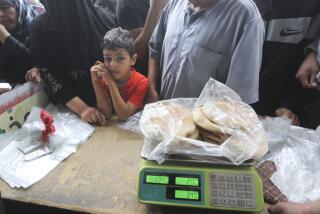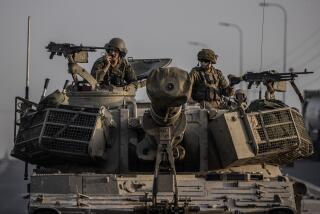Medical Preparation Meets Reality
- Share via
WASHINGTON — The people who work at the New York State Emergency Center in Albany report to work each day--underground, in a bunker surrounded on all sides by 4 feet of reinforced concrete--in preparation for a medical disaster.
On Tuesday, the disaster occurred: “Right now we’re trying to locate any survivors, possibly trapped in the collapses,” said Hans Hallman, a spokesman for the center, adding that all of its forces in New York City had been deployed--emergency medical aid, transportation personnel, the National Guard, police, firefighters, “everyone.”
The nation’s health-care system takes continual steps to prepare for massive disasters, exercises that pull together federal health-care officials, their state and local counterparts, and medical providers throughout the country. Arlington County, Va., prepares for catastrophes at the Pentagon. Federal emergency plans include medical care, patient evacuation, mortuary care and treatment of injured animals.
But in the chaotic aftermath of Tuesday’s terrorist attacks, such carefully laid plans collided with the complications of reality.
As the Washington Hospital Center declared an emergency Code Orange, helicopters rushed seven Pentagon victims to the facility, which has the region’s only adult burn center. But at 11 a.m., the center’s four helicopters were grounded under orders from the U.S. Park Police. About 20 doctors and nurses, dressed in scrub uniforms, milled around until the ban was lifted at 2:45 p.m. A helicopter returned with another burn victim at 4 p.m.
“We’re here to provide patient care, but we only had 12 patients,” said Mark Smith, chairman of emergency medicine. “The reason we had so few is that they were unable to get out.”
Health and Human Services Secretary Tommy G. Thompson activated the National Disaster Medical System, preparing medical teams nationwide to assist local areas in responding to medical emergencies--marking the first time the federally coordinated response system has been activated on a nationwide basis.
Thompson said the government was dispatching four disaster medical teams to New York City and three to Washington. Each 35-member team includes physicians, nurses and emergency health technicians, all trained in traumatic injuries, he said.
Officials also sent four mortuary disaster teams to New York City and three to Washington. Noting that many people had donated blood, Thompson said: “We need Americans to continue to answer to that call.”
An additional 73 disaster medical teams throughout the country stood ready to be deployed, along with 7,000 private-sector medical and support personnel.
Health and Human Services was working with other federal agencies and local health officials to assess specific needs in New York City and the nation’s capital. Such disaster teams have previously been summoned in response to natural disasters, such as Tropical Storm Allison, which caused major flooding in Houston earlier this year. Thompson also activated the federal Disaster Mortuary Operational Response Teams, burn units and an emergency surgical team.
“Today’s extraordinary emergencies call for extraordinary response, and I have made the federal disaster response system ready nationwide in order to ensure that we will have the total resources we will need to aid our people in any affected area,” Thompson said. “Our emergency medical-response system is ready to provide rapid strategic response, providing the assistance that is needed where it is needed.”
Disaster-relief agencies worked with the military to rush thousands of pints of blood to New York City and Washington.
The American Red Cross, which collects about half of the country’s blood, said it has 60,000 units in East Coast cities ready to ship to New York City hospitals and to the Washington area, where the extent of damage and injuries from the attacks was less devastating.
“We’re working with the military in New York and New Jersey so we can get the blood in the appropriate hospitals,” Red Cross Vice President Dr. Jerry Squires said. “We stand ready to ship more to those areas if they are needed.”
At St. Vincent’s Hospital in New York City, hundreds of people showed up to give blood, lining up behind signs fashioned from brown-paper bags saying O positive or O negative. Ultimately, the hospital couldn’t take more blood.
“They told us they would take us to hospitals where our blood was needed,” said Matt Solow, a first-year law student at Cardozo Law School.
One major hospital in New York gathered Polaroid instant cameras to photograph the dead and injured, which should make identification quicker. The federal government also mobilized medical examiners and support staff to help in the grim job.
“We’re not going to send any help there at this point,” said Scott Carrier, a spokesman for the Los Angeles County coroner. “We’re kind of in a stand-down situation to see if something would happen in L.A.”
Some countries use mass burials or mass cremations when natural disasters or tragedies strike. But medical examiners in the United States are committed to identify each body and protect personal property. At the same time, Carrier said, “there’s only so much the medical examiner’s office can handle.”
*
Times staff writers Charles Ornstein, Edmund Sanders, Megan Garvey, Shari Roan and Robert Rosenblatt contributed to this story.
More to Read
Sign up for Essential California
The most important California stories and recommendations in your inbox every morning.
You may occasionally receive promotional content from the Los Angeles Times.










